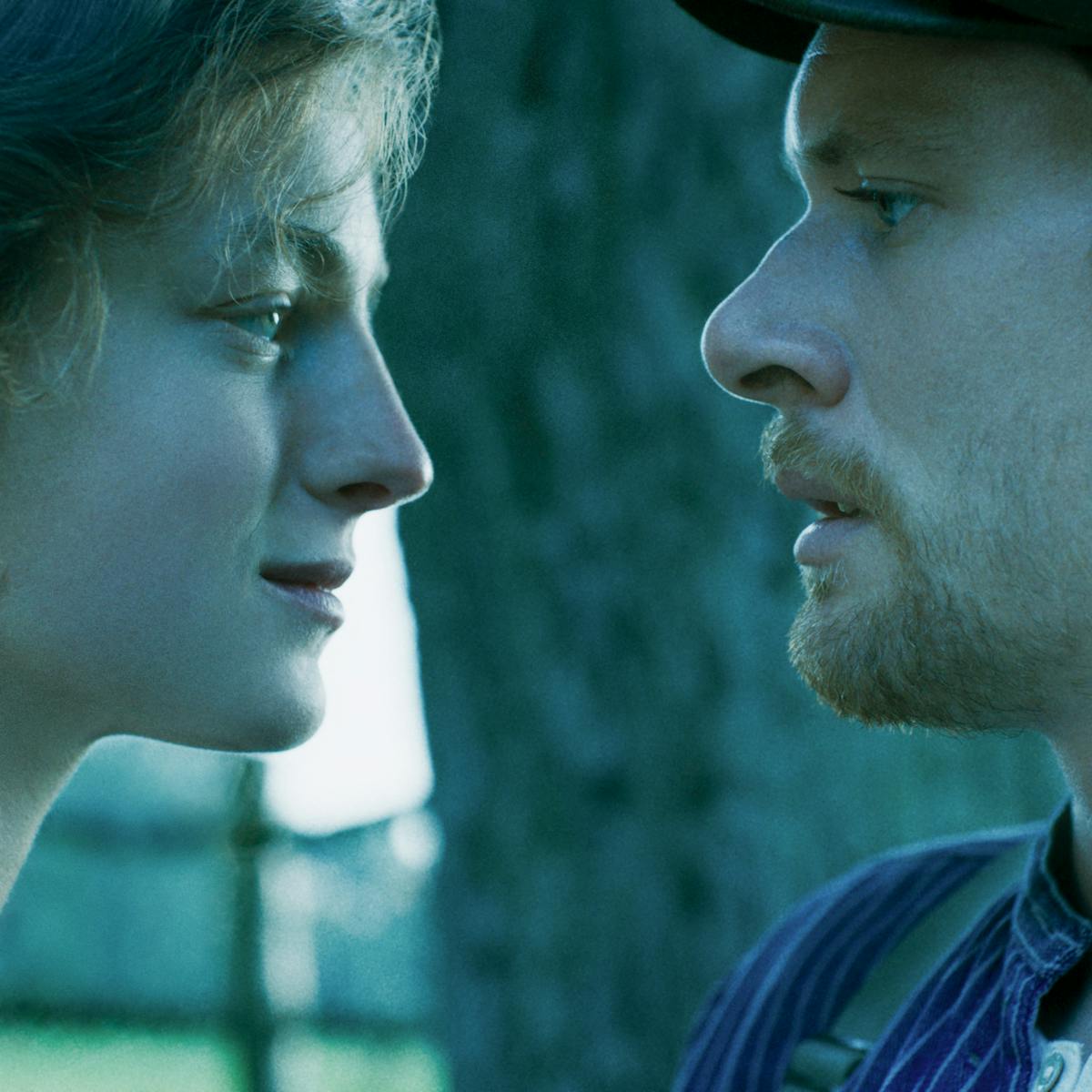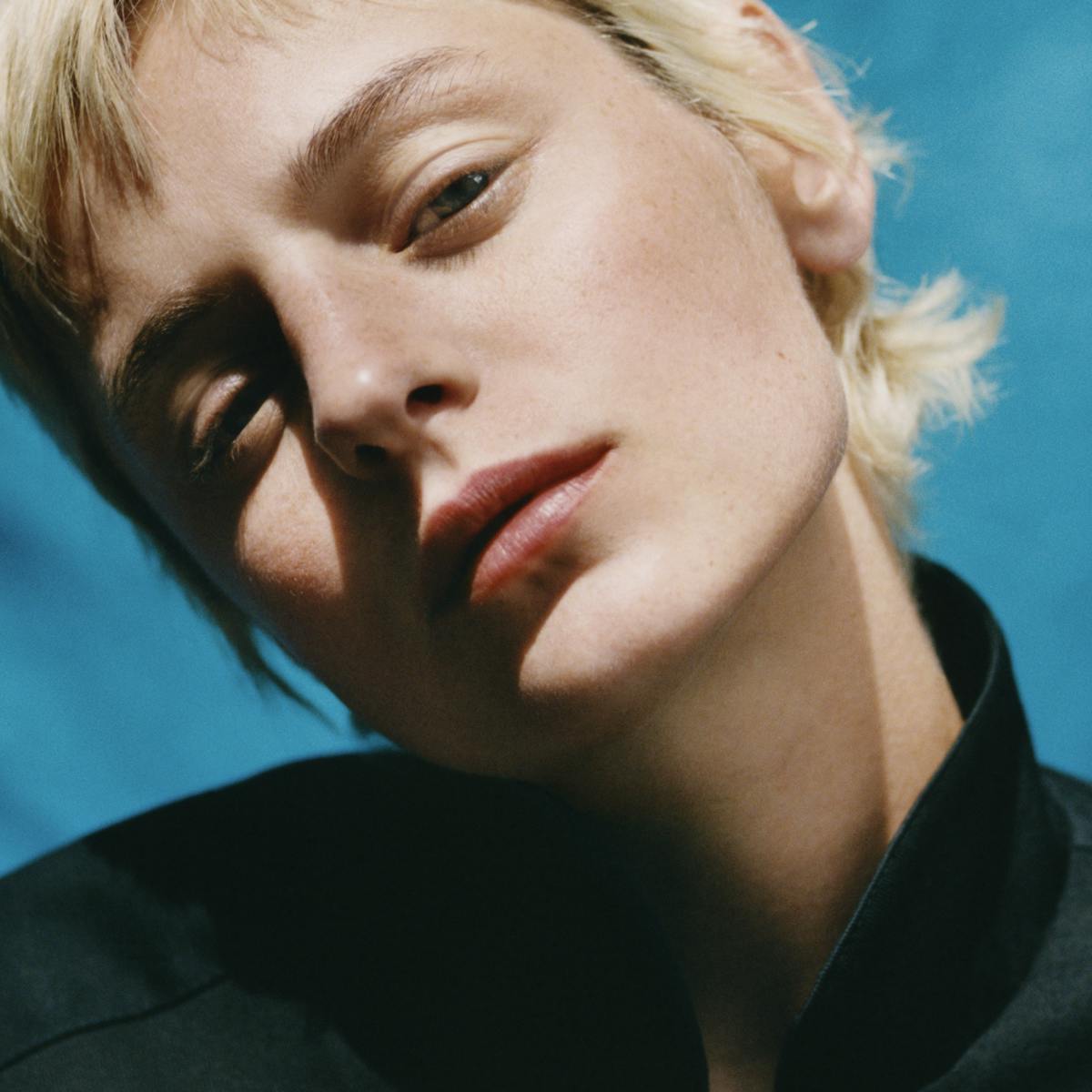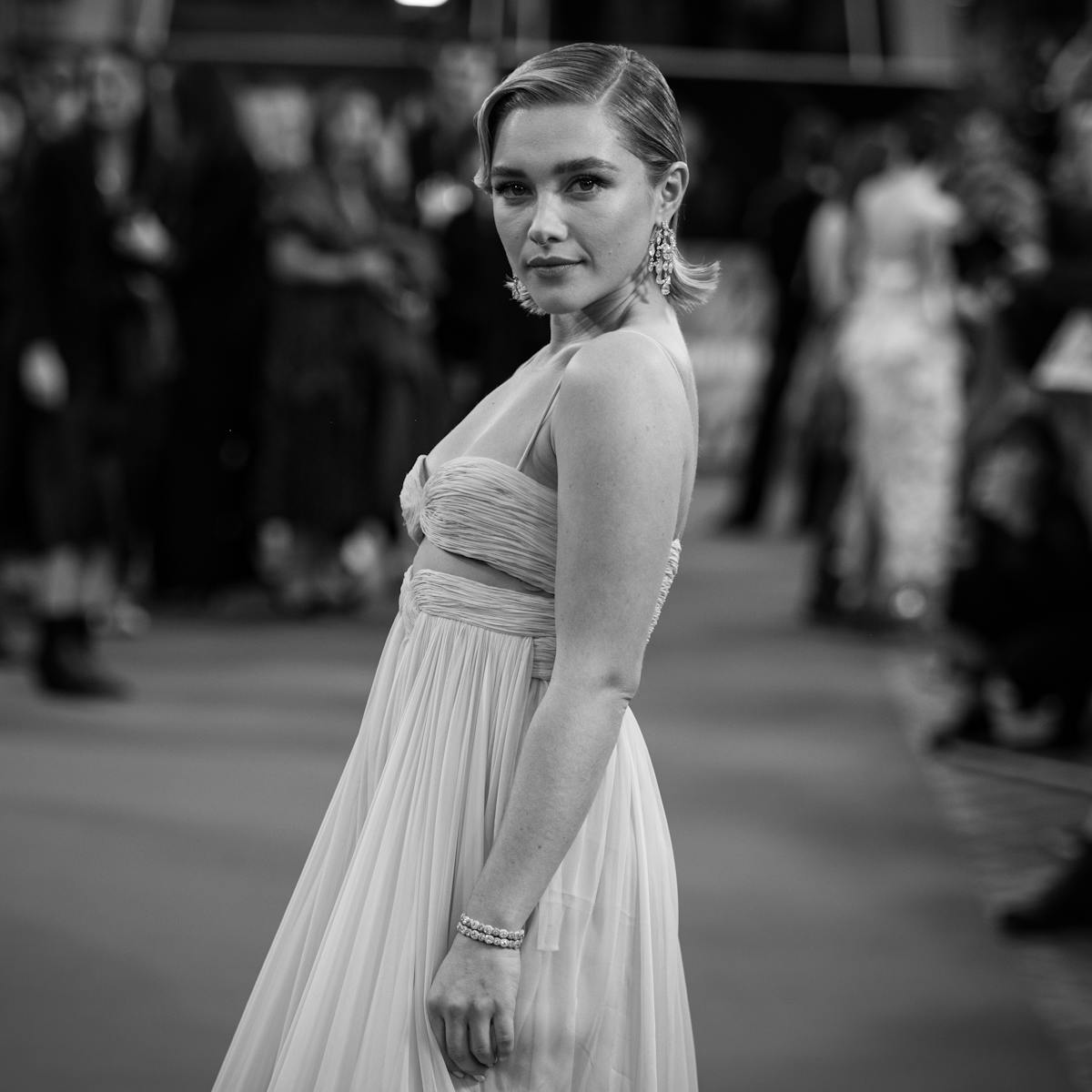It was the height of the COVID pandemic when French director Laure de Clermont-Tonnerre received David Magee’s (Finding Neverland) script for an adaptation of 1929’s Lady Chatterley’s Lover by D.H. Lawrence, a novel she had come across in college. “I read the script, I reread the book, and I was like, Whoa, this is such a wonderful idea to revive this novel and this female journey now,” Clermont-Tonnerre says. “At a moment where we’re all locked in, I felt that the need for human connection was, more than ever, crucial to explore.”
Clermont-Tonnerre was coming off of the success of her first feature film, 2019’s The Mustang, which explores questions of freedom and confinement as it tells the story of Roman (Matthias Schoenaerts), a man who begins to understand his rage by taming wild horses in prison, and earned her the Breakthrough Director Award at the Gotham Independent Film Awards. The director, and former actor in films like Giraffada and Isabelle Huppert starrer Comedy of Innocence, shows her range with her second feature, Lady Chatterley’s Lover, which probes similar themes through the lens of a lusty 1920s period drama.
Lady Chatterley’s Lover charts the relationship between Lady Constance “Connie” Chatterley (The Crown’s Emma Corrin), and her working-class groundskeeper, Oliver Mellors (Unbroken’s Jack O’Connell), a solitary man who had returned home from World War I to find his wife had left him. As Connie and Mellors fall in love and explore their sexuality together, the book — and Clermont-Tonnerre’s film — takes on a joyous quality. “Really, what D.H. Lawrence wanted was to glorify sexuality and to make it pure and beautiful, rather than being dirty and shameful,” says the director. “It was, for him, an ode to life, a way to revitalize yourself with nature.”
Ahead of the premiere of her film at the London Film Festival, Clermont-Tonnerre took a moment to discuss the enduring relevance of Lady Chatterley’s Lover.
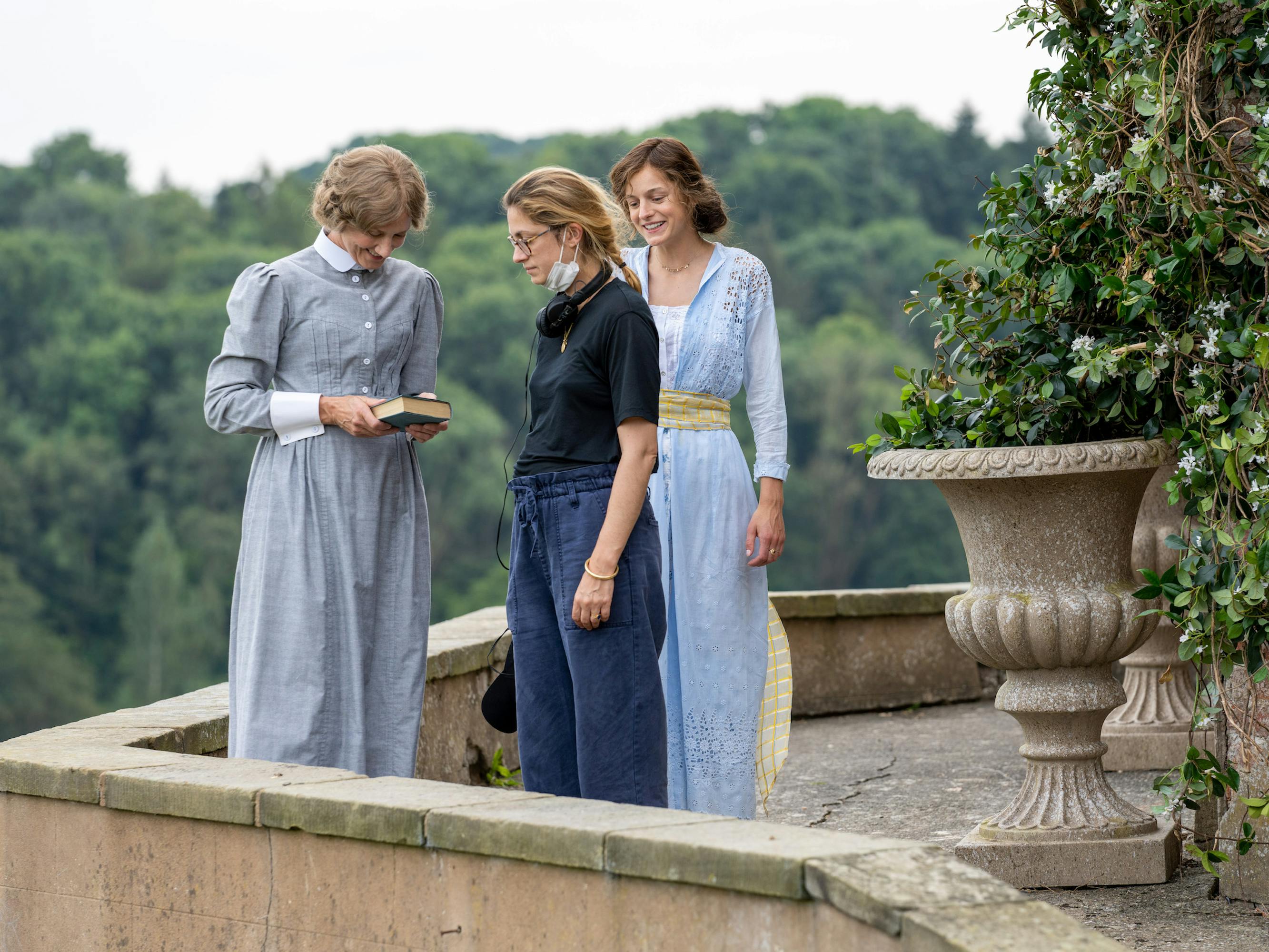
Mrs. Bolton (Joely Richardson), Laure de Clermont-Tonnerre, and Connie (Emma Corrin)
Miranda Tsang: What drew you to Lady Chatterley’s Lover? Its themes are similar to those of The Mustang.
Laure de Clermont-Tonnerre: Lady Chatterley’s Lover allowed me to explore again my obsessional themes of two places — the inside and the outside — and how to break free. With The Mustang, you have wild horses in a prison; there’s something obviously wonderful and terrifying about it. The idea of containing this anger, this uncontrollable force — that is something that I was really interested in. There is also something very sensual about the invisible dialogue between the men and the horses, and that was what I was also very drawn to, to tell the story of Lady Chatterley. For me, she and Mellors are two animals that recognize themselves as being from the same nature. Their relationship grows through sensuality, through a soulmate energy, a need for ecstatic freedom and connection.
You both wrote and directed The Mustang. Did Lady Chatterley’s Lover feel different for you, to be solely focused on directing?
LCT: Yes, definitely. The Mustang was a process; I was co-writing it, but also conducting all the research [into] prison, which was a very journalistic approach of interviewing a lot of men, understanding their lives, their crimes, their anger, and that was really feeding the story and the characters. Everything was really shaped already in this script. And when you read a script that’s not yours, you have to make sure that you feel comfortable in the writing and that you can infuse the script with your vision. I was also doing TV before [The Act], and it’s very different. But definitely, this was a challenging exercise. Because it was an adaptation, there was not only the script, but also the material of the book, which was a great genesis to refer to. I don’t think I could take on an original script that I hadn’t written. I would feel maybe too like a stranger coming into a house that’s not mine.
How did you know that Emma Corrin was going to be your Lady Chatterley?
LCT: To be able to revisit a novel that’s been done in the past many times, you need to bring something that feels unique and never seen before, so the casting is very important. I thought about Emma pretty quickly because I had seen The Crown and they had this energy that was very present, that would just bring you into the here and now. In all their delivery and demeanor, there is something very chameleonic. I think I was very surprised by their singular energy that’s effortless and so fresh.
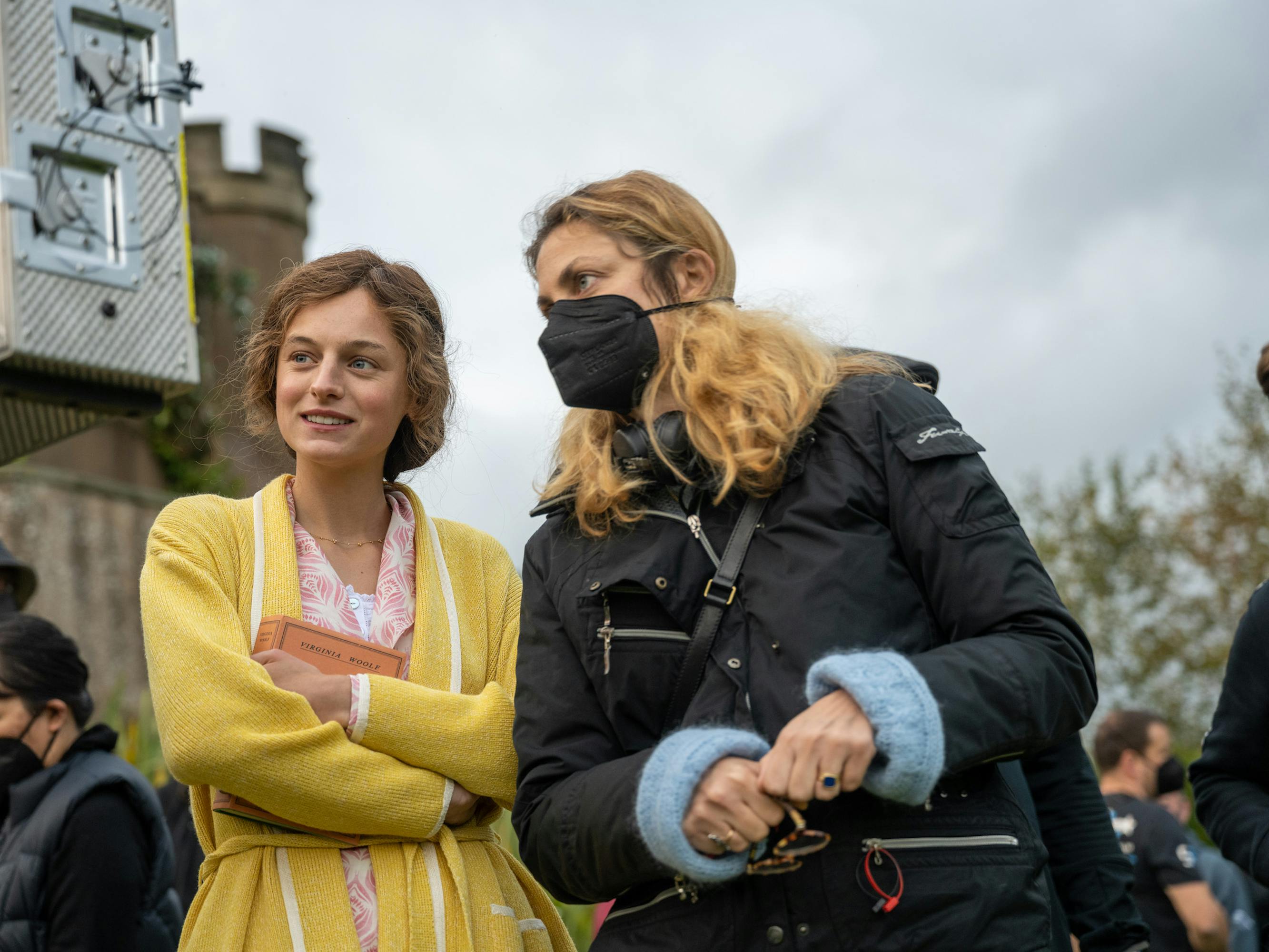
Connie (Emma Corrin) and Laure de Clermont-Tonnerre
And what about Jack O’Connell as Oliver Mellors?
LCT: The trap of this character is to cast a cliché of the wordless man in the woods. But Oliver Mellors is educated, he’s smart, he’s sensitive — he just lives a little bit like a monk in his house. He’s given up a bit on humanity, he’s been betrayed. He’s grieving. So, he is vulnerable and sensitive and that was really important. It’s a balance between raw and refined, which is hard to find. Jack has this extreme tenderness that you feel immediately when you meet him. When we all met the first time, immediately we could feel a camaraderie between him and Emma, it was pretty obvious.
What made you decide to take on a period film?
LCT: Yeah, it’s interesting because my first film was not period, but it was in a prison, and there’s something about the uniform that’s not period, but still, you are not completely in the present. There was something timeless about that film that I really enjoyed.
I wanted to find a way to make the twenties accessible to modern audiences, being playful so that we’re never rigid or trapped in the decade as if it were a documentary. But referencing a historical period is always exciting — to put some bridge between what happened in the past and what’s happening now. With this one, it was scandalous and still is. The body of the woman is still a field of conflict in the world, especially in Iran today. It’s never enough to be able to express the freedom of the body, a woman controlling her own body, which is really the subject; so, this story is timely and timeless.
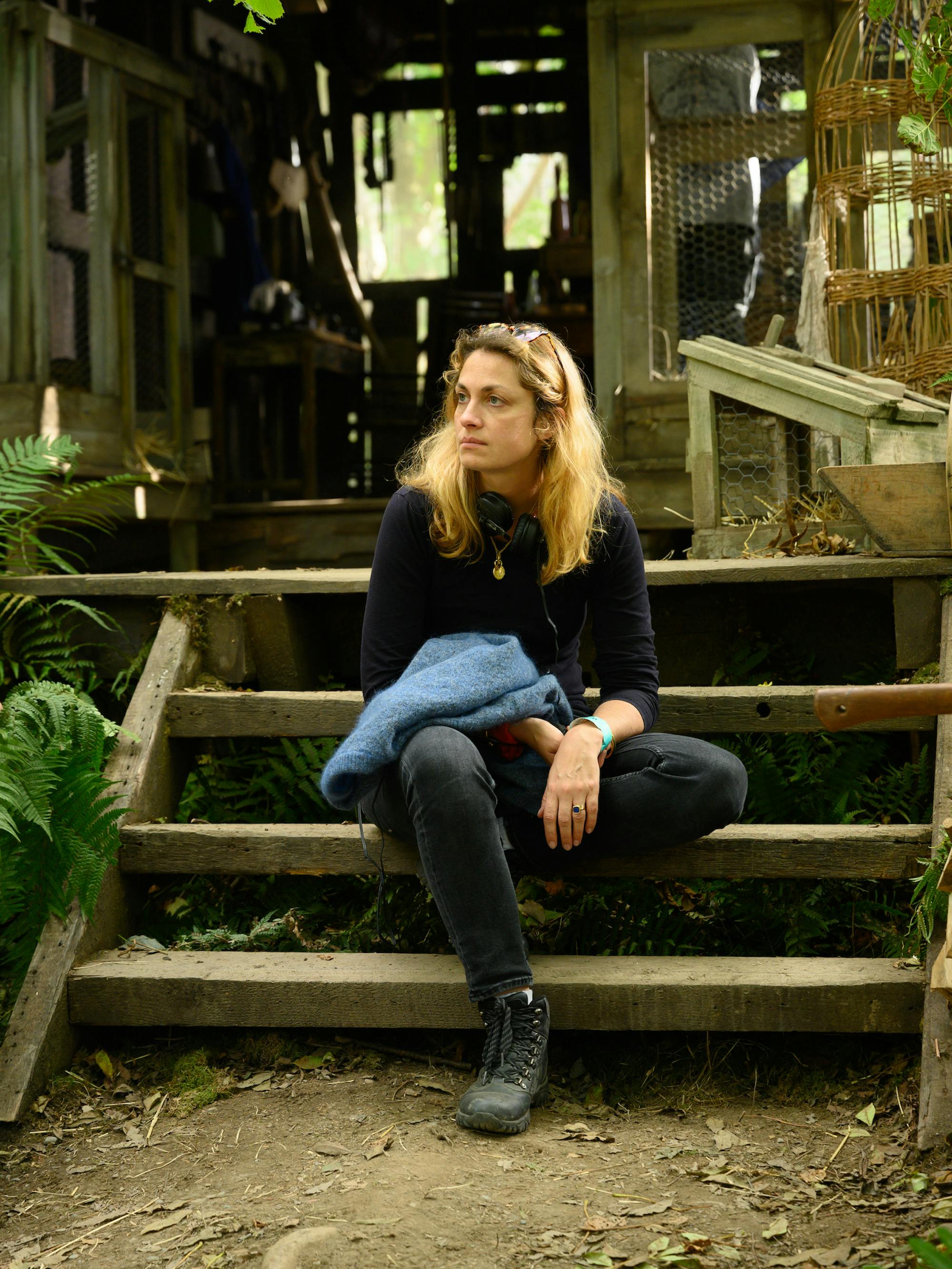
Laure de Clermont-Tonnerre
How did you find a perfect balance of depicting Lady Chatterley’s sexual journey so fully without it ever feeling gratuitous?
LCT: There was a version that was very sexual; there was a version that was actually very romantic. You’re building up so you have the right ingredients, the right moment. The sexuality, I always wanted to make it explicit because it’s really part of the book. It’s an erotic novel; it was banned for that. But more than that, it was banned because it was talking about female sexual pleasure. It was the first book addressing this topic and that was not really accepted. And this connection [between nature and self] was so important for D.H. Lawrence and was not well received. Portraying those scenes as a natural, vital need, was the challenge and what we really wanted to aim for. Each moment of sharing intimacy tells something about her, about him, and how they grow together. Also, the fact that the setting is in nature — you can feel the oxygen and you can feel the connection with life; it’s ecstatic.
Did your acting experience contribute to how you directed this film, particularly the intimate scenes?
LCT: Because I was an actor, I have a lot of empathy for actors. Everyone works really hard on set, but actors’ work is very different, it’s putting themselves naked emotionally and, in this film, also physically. So they were engaging themselves fully for us and it was exhausting. I just wanted to make sure that they were safe. I had a bad experience in the past as an actor doing one of those things and not being taken care of, and I think it’s really very traumatic. So, we all wanted to make sure that they felt respected, safe, and that there were no surprises. Knowing exactly where the camera would be, knowing exactly what [was happening], we rehearsed those scenes like dance choreography, so it was actually very precise. And I think because it was so rehearsed, it allowed them their own freedom during the takes. It was a process that we all found playful. We had this trust and we all wanted to give an example of how love — sex, passion, romance, sexuality — is a beautiful experience of life and there’s nothing shameful about it.

